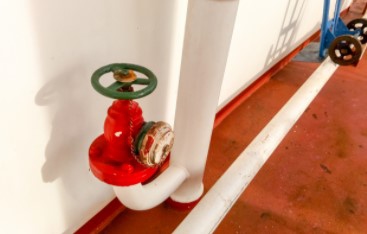If you’ve never owned a home before, you’ll now be responsible for the maintenance of a plumbing system. For the uninitiated, that can be a little intimidating. That’s why we’re giving you a novice-friendly overview of all those strange pipes, drains, and various mechanizations that remove waste and provide clean, potable water.
The following tips will keep your plumbing system in good working order and may come in handy when you encounter a plumbing problem.
Locate Your Main Shutoff Valve
A pipe bursts. Gallons and gallons of water are gushing out. You’ll be ankle-deep in water if you don’t do something now. That means finding the main shut-off valve STAT! The valve is likely in your home’s crawlspace or along an exterior wall facing the street because that’s the direction from which your municipal water supply comes. If the valve looks like a wheel, turn it clockwise to cut off the water. If it’s a knife-style valve, turn it a quarter of a turn.
There is one other place you could check for the shutoff valve: At the boundary line of your property and the street or the sidewalk, there’s a utility box in the ground. Open it. There should be a phone number for your local water service. They can provide directions on how to turn it off.
Use the Right Plunger (and Use it Right)
Did you know there is more than one type of plunger? In fact, there are four. Each one is designed for a specific purpose.
Flat plunger: Featuring a straight handle with a rubber cup at the end, flat plungers are ideal for sinks and bathtubs. Fill the sink or tub with an inch of water to create a stronger seal between the plunger and the surface.
Flange plunger: This is best for unclogging a toilet. Its unique rubber flange fits more precisely to the drain’s contour.
Accordion plunger: The cup on this model expands and contracts to create powerful suction. Use it for more serious clogs.
Stop Running Toilets
It’s normal for a toilet to make a brief hissing noise after flushing. That’s the sound of the tank filling back up. But if the hissing persists, you’ve got a problem. Remove the lid and inspect the flapper -- that’s the rubber thing at the bottom of the tank. It could be deteriorated, allowing water to pass through. This is why your tank is continually filling.
Turn off the supply valve near the base of the toilet
Flush to empty the tank
Remove the flapper by detaching it from the hinge and the chain
Take the old flapper to a hardware store to find an exact replacement
Attach the new flapper
Turn the water supply back on to fill the tank
Flush to make sure it works
Hissing problem solved.
Don’t Use Chemical Drain Cleaners
If you encounter a clog, whether it’s in the toilet or sink drain, think twice before using a chemical drain cleaner. These products are convenient, but the caustic chemicals can do major damage to your pipes with repeated use. Try this instead:
Fill a pot with water and set it on your stovetop. You’ll want the water just shy of boiling.
Pour about half a cup of dish soap into the toilet bowl and let it sit until the water on the stovetop is hot.
Carefully pour the water into the toilet bowl.
Give it a few minutes. The hot soapy water will help dislodge whatever is causing the obstruction. If that doesn’t work, call a plumber, preferably us.
Bottom line: Gaining some familiarity with your plumbing system and how it works will go a long way toward preventing problems and keeping it running efficiently. But keep a reliable plumber on speed dial just in case. Morris Plumbing, Heating & Air Conditioning is happy to help. Add (978) 961-0338 to your contacts!

